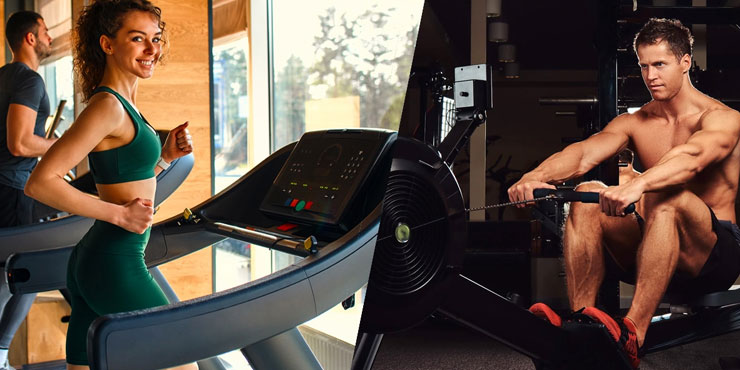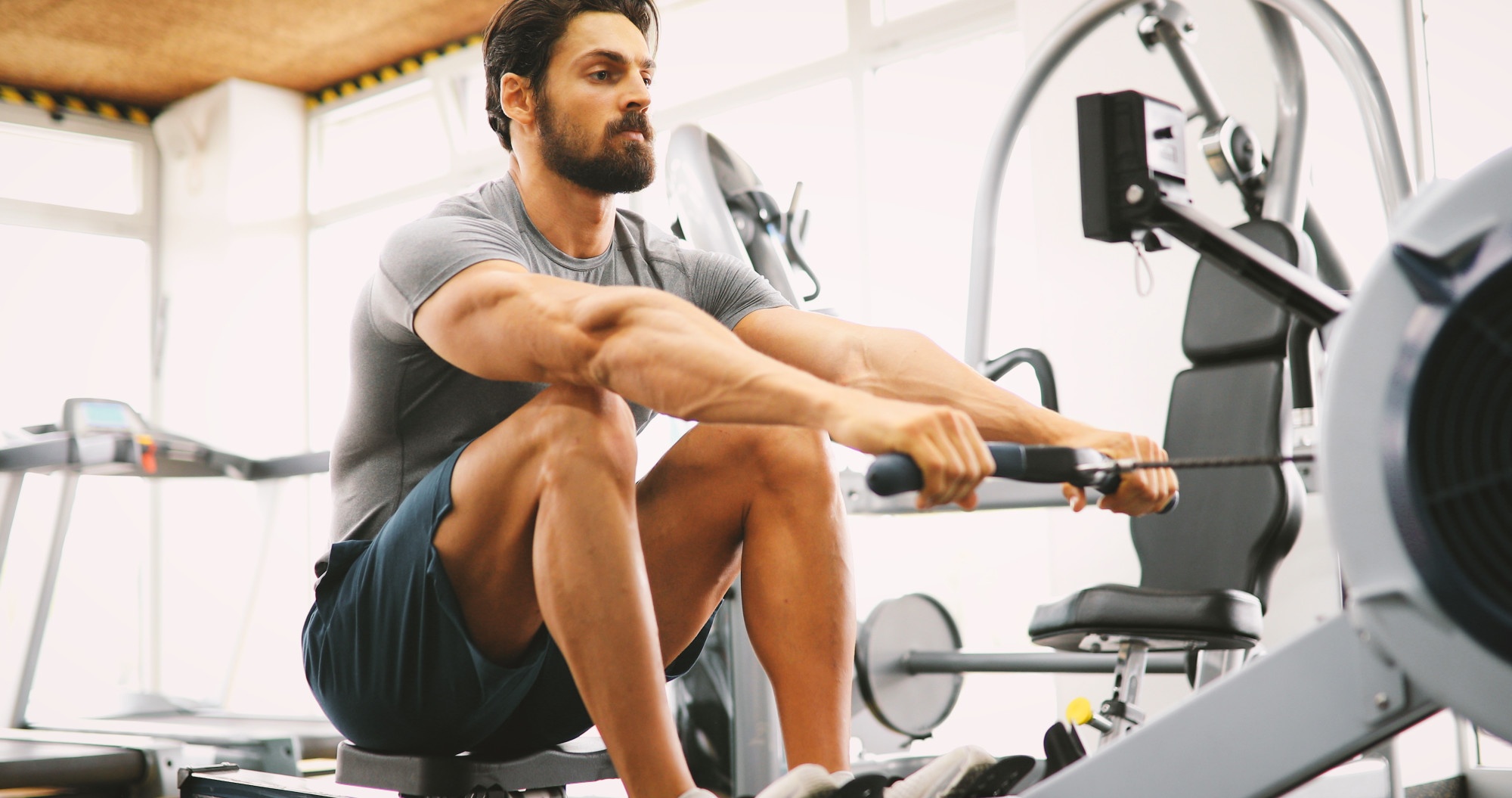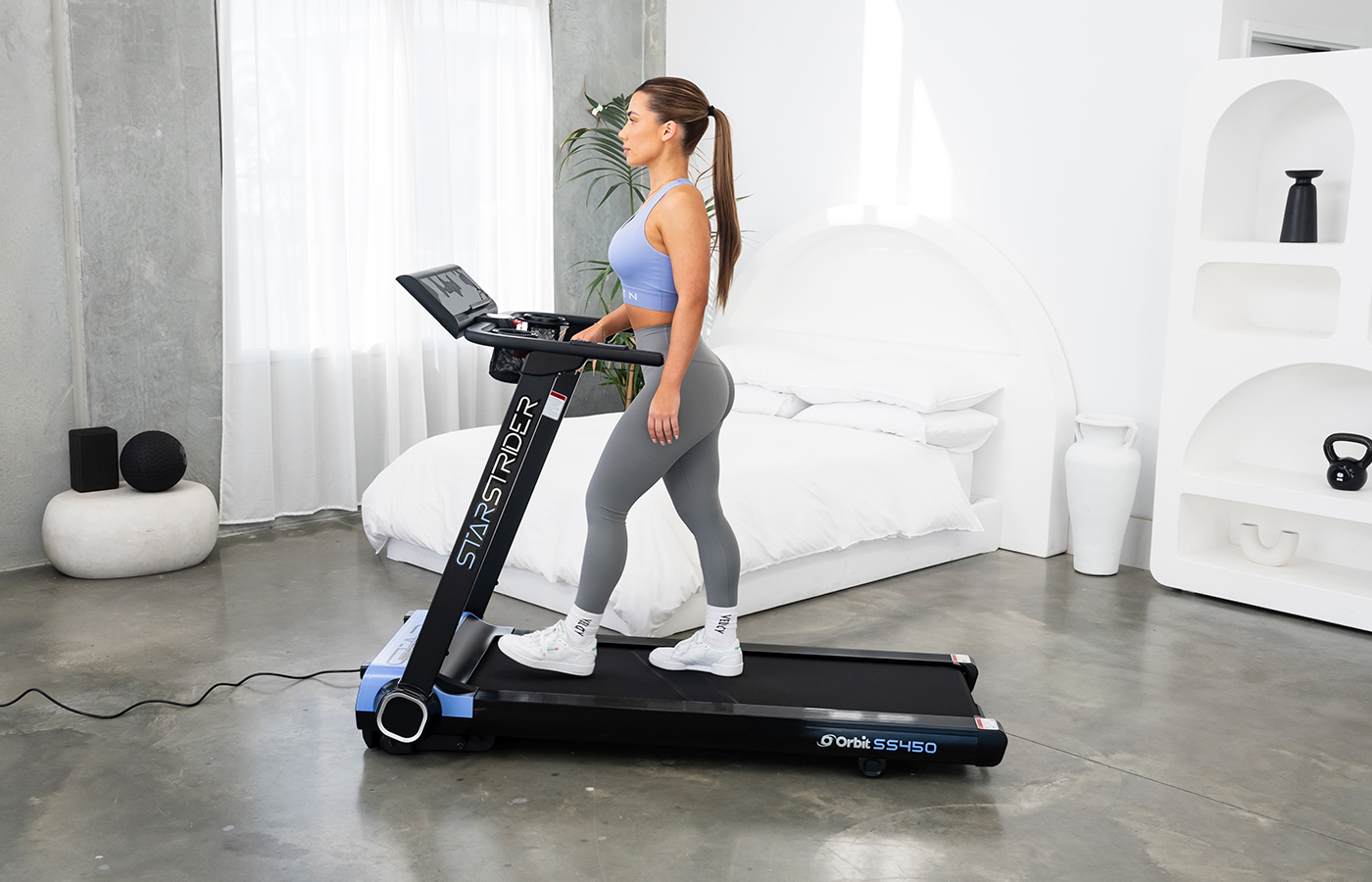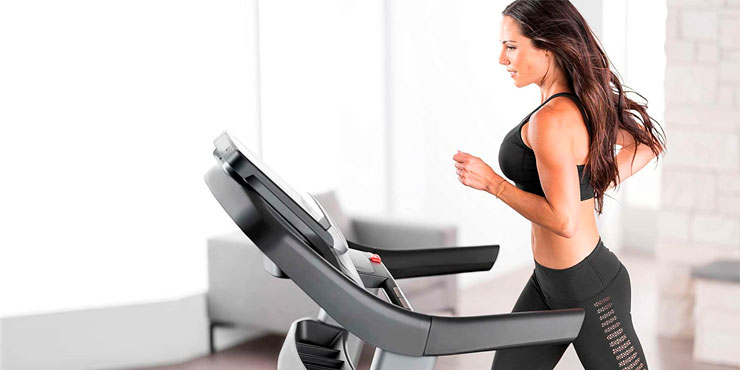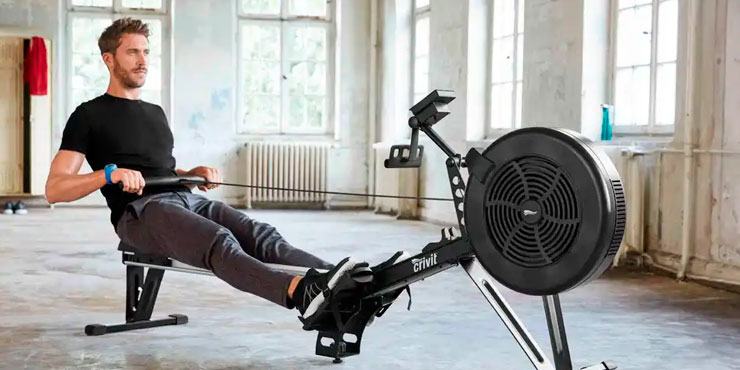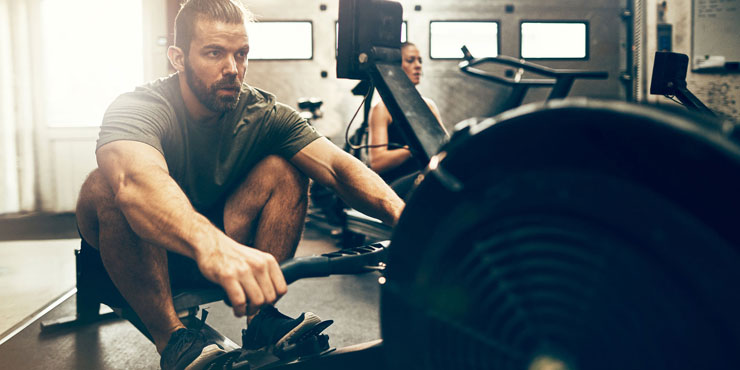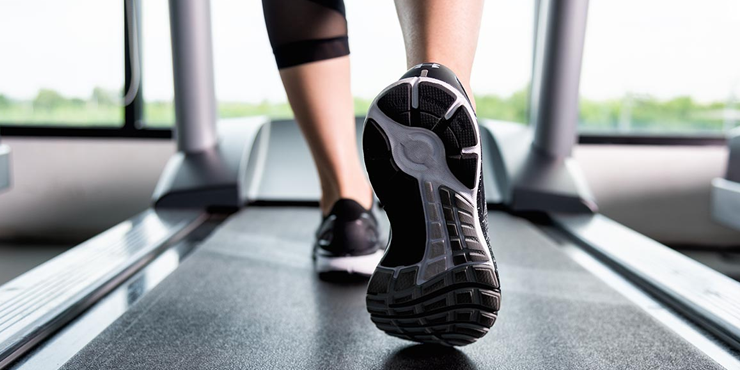Which is Better Rowing Machine or Treadmill
When it comes to achieving fitness goals and maintaining a healthy lifestyle, the choices seem endless. Among the many exercise options available, two popular contenders are often in the spotlight: the rowing machine and the treadmill. Both provide excellent cardiovascular workouts and have their own unique advantages.
In this article, we’ll look at the pros and cons of rowing machines and treadmills to help you make an informed decision about which one is best for your fitness journey. Whether you’re looking to lose extra pounds, increase your endurance, or just improve your overall health, understanding the differences between these two types of exercise is the first step to creating an exercise regimen that’s right for you. We’ll compare and answer the question “Which is better rowing machine or treadmill?” in detail and where the available benefits of each machine will matter.
So let’s dive in and find out if the rhythmic glide of a rowing machine or the steady stride of a treadmill is the better choice for your fitness goals.
Contents
Key Considerations When Choosing:
- Fitness Goals:
Before deciding between a rowing machine and a treadmill, it’s important to define your fitness goals. Do you want to improve cardiovascular fitness, build muscle, or lose weight?
Rowers are great for full-body workouts that target multiple muscle groups, making them a great choice for those looking to tone or burn calories. Treadmills, on the other hand, are ideal for people who are primarily interested in cardiovascular endurance and running goals. - Space and Budget Constraints:
Consider the space available in your home or gym and your budget. Rowers typically have a smaller footprint and are often more budget-friendly than high-end treadmills. If you have limited space or a tight budget, a rowing machine may be a more practical choice. - Personal Preferences:
Personal preference plays an important role in choosing between these two machines. Some people enjoy the rhythmic motion of rowing and the fact that it engages both upper and lower body muscles. Others prefer the simplicity of running on a treadmill, especially if they are already avid runners. Try both types of exercise to see which one you enjoy more, as this can greatly affect your motivation and consistency in working out. - Health Considerations:
Consider your current health and any limitations you may have. Rowing is a low-impact exercise that puts less stress on the joints, making it a good option for people with joint problems or those recovering from injuries. Treadmills, while versatile, can be high-impact, so they may not be the best choice for everyone, especially if you have joint problems. - Variety of Workouts:
Think about your need for variety in your workout. Rowers offer several types of workouts, including stationary rowing, interval training and more. Treadmills offer options such as incline training and interval running. If you crave variety in your workout, consider which machine offers the versatility you desire. - Space for Accessories:
Consider whether you want the ability to incorporate additional accessories such as resistance bands, dumbbells, or stability balls into your workout. Some rowers are better suited for this type of versatility, while treadmills may have limitations in this regard. - Monitoring and Tracking Features:
Look at the monitoring and tracking features that each machine offers. Many modern rowers and treadmills have built-in displays that track metrics such as distance, speed, heart rate and calories burned. Consider which metrics are most important to your fitness journey and choose the machine that provides the data you need.
Rowing Machine vs. Treadmill Comparison:
Cardiovascular Benefits
Both rowing machines and treadmills offer valuable cardiovascular benefits, making them effective tools for improving your heart health and overall fitness. Here, we’ll explore the cardiovascular advantages of both machines and how they can contribute to your workout routine.
Rowing machines and treadmills are capable of providing high-intensity cardio workouts. High-intensity cardio is known for its ability to raise your heart rate quickly, improving your cardiovascular fitness and helping you burn calories efficiently. This makes both machines ideal for individuals looking to maximize their workout intensity.
Ideal for HIIT routines: High-intensity interval training (HIIT) has gained popularity for its effectiveness in improving cardiovascular health. Both rowing machines and treadmills can be effectively incorporated into HIIT routines. You can alternate between short bursts of high-intensity effort and short recovery periods, which promotes cardiovascular endurance and calorie burning.
While rowing machines provide an excellent cardiovascular workout, it’s worth noting that running is often considered one of the best cardio exercises. Treadmills are designed specifically for running, making them a great choice for individuals who want to focus primarily on running-related cardiovascular goals. Running engages large muscle groups and can raise your heart rate quickly, making it an efficient way to improve cardiovascular fitness.
Prolonged heart rate elevation: A unique benefit of rowing machines is their ability to keep your heart rate elevated for longer periods of time. Rowing is a full-body exercise that engages both upper and lower body muscle groups simultaneously. This comprehensive engagement can result in a sustained cardiovascular challenge, allowing you to work at a high intensity for extended periods of time. As a result, rowing can be particularly effective for those seeking to improve endurance in addition to cardiovascular fitness.
A detailed review on choosing the Best Cardio Machines with multiple benefits of each option.
Muscle Building
When it comes to building muscle, the choice between rowing machines and treadmills boils down to how effectively they engage and activate muscle groups. Here, we’ll compare the muscle-building potential of these two machines:
Treadmills primarily target the muscles of the lower body, especially the muscles in your legs. When you run or walk on a treadmill, you use the muscles in your calves, thighs, hamstrings, and glutes. The repetitive motion of running or walking can help develop these lower body muscles over time.
Rowers, on the other hand, provide a full-body workout that activates almost every major muscle group. Rowing engages the muscles in your legs, glutes, lower back, upper back, shoulders and arms through a complete rowing stroke. This comprehensive muscle involvement makes rowing a highly effective exercise for building muscle and strength.
Because of the greater range of motion and involvement of more major muscle groups, rowing machines have a greater muscle-building potential than treadmills. The rowing motion involves both pushing and pulling actions, making it a compound exercise that targets multiple muscle groups simultaneously. This not only promotes muscle growth, but also increases overall muscular endurance.
Many rowers allow you to adjust the resistance level, simulating the feeling of rowing against the water. This feature allows you to progressively challenge your muscles, making rowing an effective choice for those looking to build and tone muscles over time.
If you’re particularly interested in developing your upper body muscles, rowing can be a valuable addition to your workout routine. The pulling motion of rowing heavily engages the muscles in your upper back, shoulders, and arms, helping you achieve a balanced and well-rounded physique.
Rowing Machine or Treadmill Injury Risk
Treadmills are known for their high-impact nature. Running or walking on a treadmill involves the repetitive impact of your feet against a hard surface. This constant impact can put significant stress on your joints, especially your knees, hips, and ankles. Over time, this repetitive stress can increase the risk of injuries such as shin splints, stress fractures, and joint pain.
Rowers, on the other hand, are considered low-impact exercise equipment. The rowing motion involves smooth, fluid movements that do not subject your joints to the jarring impact experienced on a treadmill. When using a rowing machine, your feet remain in contact with foot rests, and the rowing motion is a controlled and gentle pull and push. This minimizes the risk of joint strain or impact-related injuries.
Rowers are an excellent choice for people who want to protect their joints or who already have joint problems. They provide a cardiovascular workout without the jerks and bumps associated with high-impact exercises such as running. As a result, rowing is often recommended for those with conditions such as arthritis, joint pain, or those recovering from joint injuries.
Treadmill workouts, especially for runners, can sometimes lead to overuse injuries due to the repetitive nature of the activity. Common overuse injuries include tendonitis and stress fractures. Rowing, with its full-body involvement and less repetitive motion, can help reduce the risk of such overuse injuries.
It’s important to note that while rowing machines offer a lower risk of impact-related injuries, proper technique is critical. Incorrect rowing form can potentially lead to strain or discomfort. Therefore, it’s a good idea to learn proper rowing technique to maximize the safety and effectiveness of your workout.
When considering fitness equipment for your home gym, it's important to factor in both the initial cost and ongoing maintenance expenses. Here, we'll compare the cost and maintenance aspects of rowing machines and treadmills:
-
Initial Cost:
- Treadmills: Treadmills tend to be more expensive upfront. The cost of a treadmill can vary significantly depending on the brand, features, and quality. High-end treadmills with advanced features such as motorized inclines and touchscreen displays can be quite pricey.
- Rowing Machines: Rowing machines typically have a lower initial cost compared to treadmills. There is a wide range of rowing machines available, including budget-friendly options that make it a cost-effective choice for many fitness enthusiasts.
-
Ongoing Costs:
- Treadmills: Treadmills generally have higher ongoing costs due to their motor and electronic components. These machines require electricity to operate, which can contribute to increased energy bills. Additionally, maintenance costs can be higher as well. Treadmills may require periodic lubrication of the belt, replacement of the belt itself, and maintenance or repairs for electronic components.
- Rowing Machines: Rowing machines are simpler in design and have lower ongoing costs. They are often manual or operate with minimal electronic components, resulting in lower electricity usage. Maintenance for rowing machines is usually minimal, mainly involving routine cleaning, checking for loose bolts, and ensuring the seat and pulley systems remain in good condition. Overall, rowing machines are known for their durability and reliability.
-
Longevity and Durability:
- Treadmills: High-quality treadmills can be durable and withstand years of use. However, the lifespan can vary depending on the brand and maintenance. The electronic components and motor may require more attention over time.
- Rowing Machines: Rowing machines are known for their longevity and durability. With proper care and maintenance, a well-built rowing machine can last for many years, making it a cost-effective long-term investment.
-
Space and Storage Considerations:
- Treadmills: Treadmills can take up more space, and folding models are available to save space when not in use. However, even folding treadmills can be relatively bulky.
- Rowing Machines: Rowing machines are often more compact and can be easier to store, especially if you choose a foldable or compact model. This can be an advantage for those with limited space.
In conclusion, while the initial cost of treadmills is typically higher, rowing machines offer a more budget-friendly option. Moreover, rowing machines have lower ongoing costs due to their simplicity and durability. When making your choice between the two, it's essential to consider your budget, available space, and long-term maintenance expectations to ensure you select the fitness equipment that aligns with your needs and financial considerations.
Experts’ Opinions
Summary
In summary, the comparison between rowing machines and treadmills reveals key distinctions that can influence your choice of fitness equipment. Both machines offer unique advantages, making the decision dependent on individual goals, preferences, and circumstances.
Ultimately, the choice between a rowing machine and a treadmill should be based on your unique fitness goals, preferences, and circumstances. Consider your specific objectives, such as cardiovascular fitness, muscle building, joint health, and budget constraints. Additionally, take into account personal preferences like running versus rowing and the space available in your home.
By carefully evaluating these factors, you can select the machine that aligns best with your individual fitness needs and set yourself on the path to a healthier lifestyle.

